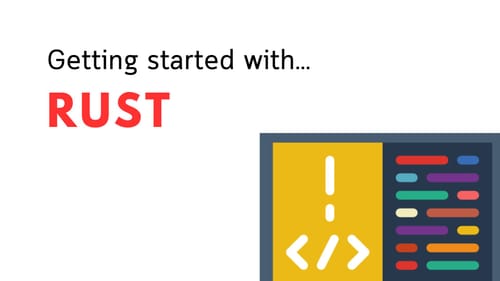Struct เป็นประเภทของโครงสร้างข้อมูลที่เหมือนกัน Tuples Types ที่ทำหน้าที่เก็บข้อมูลที่ที่แตกต่างกัน ตัว Struct จะต่างจาก tuples คือ ใน struct นั้น เราจะต้องตั้งชื่อข้อมูลแต่ละส่วนให้ชัดเจนว่าค่านั้นหมายถึงอะไร
Basic
วิธีการสร้าง struct นั้นเราจะใช้ struct เป็นคำนำหน้า โดยที่ภายใน {} นั้นเราจะประกาศประเภทของข้อมูล แบบไหนก็ได้แล้วแต่เราเลย
struct User {
active: bool,
username: String,
email: String,
sign_in_count: u64,
}struct
หากต้องการกำหนดค่าให้แก่ตัวแปร
struct User {
active: bool,
username: String,
email: String,
sign_in_count: u64,
}
fn main() {
let user1 = User {
active: true,
username: String::from("jaranchai"),
email: String::from("[email protected]"),
sign_in_count: 1,
};
println!("Username: {}", user1.username);
println!("Email: {}", user1.email);
println!("Sign in count: {}", user1.sign_in_count);
println!("Active: {}", user1.active);
}example struct
การเข้าถึงข้อมูลเราสามารถเข้าถึงข้อมูลแต่ละตัวได้โดยการอ้างอิงชื่อตัวแปรภายในเลย user1.email
เช่นเดียวกันกับการแก้ไขข้อมูลภายใน เราก็ใช้วิธีเดียวกัน (อย่าลืมเพิ่ม mut หลัง let)
user1.email = String::from("[email protected]");assign new value
Creating Instances from Other Instances
เรายังสามารถสร้างข้อมูลใหม่ โดยใช้ข้อมูลจาก struct ตัวอื่นได้ และสามารถเลือกที่จะแก้ไขข้อมูลบางตัวได้
fn main() {
let mut user1 = User {
active: true,
username: String::from("jaranchai"),
email: String::from("[email protected]"),
sign_in_count: 1,
};
let user2 = User {
active: user1.active,
username: user1.username,
email: String::from("[email protected]"),
sign_in_count: user1.sign_in_count,
};
}create new variable and instance from other instance
เพื่อให้เราเขียนโค๊ดได้สั้นลง เราอาจใช้วิธีระบุ ..user1 และเลือกเปลี่ยนเฉพาะบางตัว
fn main() {
let mut user1 = User {
active: true,
username: String::from("jaranchai"),
email: String::from("[email protected]"),
sign_in_count: 1,
};
let user2 = User {
email: String::from("[email protected]"),
..user1
};
}create new instance by ..
Struct with Tuples
เราสามารถใช้งาน struct รวมกันกับ tuples ได้ด้วยเช่นกัน
struct Color(i32, i32, i32);
struct Point(i32, i32, i32);
fn main() {
let black = Color(0, 0, 0);
let origin = Point(0, 0, 0);
}Struct with tuples
หากต้องการอัพเดทข้อมูลสามารถทำได้ทั้งแบบ แก้ไขทั้งหมด และแก้ไขเฉพาะบางตัว
struct Color(i32, i32, i32);
struct Point(i32, i32, i32);
fn main() {
let mut black = Color(0, 0, 0);
black.0 = 255;
// or
black = Color(255, 255, 255);
}update data in variable
Method Syntax
เราสามารถเพิ่ม method เข้าไปใน struct ด้วยเลยก็ได้ โดยเราจะเพิ่ม impl และเพิ่มการทำงาน method เข้าไป
#[derive(Debug)]
struct Rectangle {
width: u32,
height: u32,
}
impl Rectangle {
fn area(&self) -> u32 {
self.width * self.height
}
}
fn main() {
let rect1 = Rectangle {
width: 30,
height: 50,
};
println!(
"The area of the rectangle is {} square pixels.",
rect1.area()
);
}method syntex
การเรียกใช้งาน ก็เป็นการอ้างอิงถึงข้อมูล และ method rect1.area() ที่ต้องการได้เลย
หากต้องการใช้ ใช้ค่าใช้ struct นั้น เราจะใช้ผ่านตัวแปร &self ในการเข้าถึงค่าในตัวของ struct เอง คล้ายๆ กับการใช้ this ในภาษา java เลย
อีกอย่าง เราสามารถที่จะสร้างหลายๆ impl ได้ด้วย
impl Rectangle {
fn area(&self) -> u32 {
self.width * self.height
}
}
impl Rectangle {
fn can_hold(&self, other: &Rectangle) -> bool {
self.width > other.width && self.height > other.height
}
}Multiple impl Block
